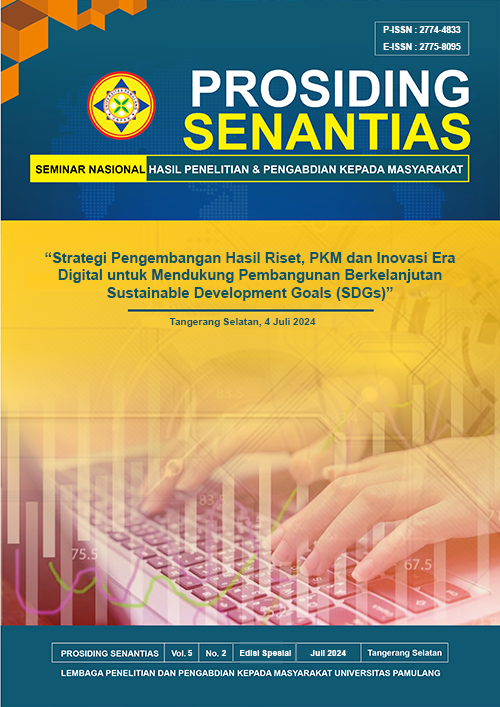Classroom Interactions as Representations of Multiculturalism: A Critical Discourse Analysis
Keywords:
Multicultural Societies, Multiculturalism, Educational, InterculturalAbstract
In countries with multicultural societies, representatives of different cultures are found interacting in a community such as the workplace, neighborhood or school. Of various origins, races, religions, tribes, even nations, they practice interpersonal and transactional communication every day. Therefore, it is important for all members of each community to have a multicultural understanding of differences. Educational institutions are agents responsible for instilling the values of multiculturalism through education. Multiculturalism as an ideology has become a worldwide discussion at the end of the century due to the large number of migrants around the world making the avoidance of local residents and newcomers from cultural conflict a major issue. Therefore, it is important to simultaneously carry out functional intercultural relations for an effective educational process to create multicultural understanding. To do this, teachers need to have social and cultural competence by integrating ethnic and cultural literacy in teaching practices to end racism, sexism, prejudice and other types of discrimination that have the potential to occur in classes consisting of diverse cultural backgrounds.
References
Ahmad, M., & Shah, S. K. (2019). A critical discourse analysis of gender representations in the content of 5th grade English language textbook. International and Multidisciplinary journal of social Sciences, 8(1), 1-24.
Ahmed, F., & Narcy-Combes, M. F. (2011). An Analysis of Textbooks from a Cultural. Tesol Journal, 5, 21-37.
Awayed-Bishara, M. (2015). Analyzing the cultural content of materials used for teaching English to high school speakers of Arabic in Israel. Discourse & Society, 26(5), 517-542.
Aydin, H. (2013). A literature-based approaches on multicultural education. The Anthropologist, 16(1-2), 31-44.
Banks, J. A. (2008). An introduction to multicultural education. Pearson.
Banks, J. A. (2009). Multicultural education: Dimensions and paradigms. In The Routledge international companion to multicultural education (pp. 9-32). Routledge.
Banks, K. H., Kohn-Wood, L. P., & Spencer, M. (2006). An examination of the African American experience of everyday discrimination and symptoms of psychological distress. Community mental health journal, 42(6), 555-570.
Babaii, E., & Sheikhi, M. (2018). Traces of neoliberalism in English teaching materials: A critical discourse analysis. Critical Discourse Studies, 15(3), 247-264.
Cecilia, R. R. (2012). Narrowing cultural boundaries in the EFL classroom: fairy tales from India. Revista española de lingüística aplicada, (25), 225-244.
De los Heros, S. (2009). Linguistic pluralism or prescriptivism? A CDA of language ideologies in Talento, Peru's official textbook for the first-year of high school. Linguistics and Education, 20(2), 172-199.
Flowerdew, J. (2013). Disourse in English language education. London: Routledge
Gramsci, A. (1971). Selections from the prison notebooks, edited and translated by Quintin Hoare and Geoffrey Nowell Smith.
Halliday, M. A. K., & Matthiessen, C. M. (2013). Halliday's introduction to functional grammar. Routledge.
Kress, G. (1993). Against arbitrariness: The social production of the sign as a foundational issue in critical discourse analysis. Discourse & society, 4(2), 169-191.
Liu, J., and F. Fang. 2017. “Perceptions, Awareness and Perceived Effects of Home Culture on Intercultural Communication: Perspectives of University Students in China.” System 67: 25–37. doi:10.1016/j.system.2017.04.003.
Solihah, N. M., & Abid, N. (2022). Finding Religious Moderation on the Indonesian Endorsed Social Studies Textbooks: Critical Discourse Analysis. IJTIMAIYA: Journal of Social Science Teaching, 6(2).
Song, H. (2013). Deconstruction of cultural dominance in Korean EFL textbooks. Intercultural Education, 24(4), 382-390.
Ullah, H., & Skelton, C. (2013). Gender representation in the public sector schools textbooks of Pakistan. Educational Studies, 39(2), 183-194.
Kim, J. (2014). The politics of inclusion/exclusion: Critical discourse analysis on multicultural education policy documents in South Korea. Multicultural Education Review, 6(2), 1-24.
Levinson, M. (2009). 'Mapping Multicultural Education' in Harvey Seigel, ed., The Oxford Handbook of Philosophy of Education (Oxford University Press)
Nguyen, K. D., & Phan, V. T. (2019). Promoting EFL learners’ exposure to multiculturalism using Skype in the classroom-a case study. EDITORIAL TEAM, 26.
Oteíza, T. (2017). The appraisal framework and discourse analysis. In The Routledge handbook of systemic functional linguistics (pp. 481-496). Routledge.
Ozturgut, O. (2011). Understanding multicultural education. Current issues in education, 14(2).
Savaria, M. C., & Monteiro, K. A. (2017). A critical discourse analysis of engineering course syllabi and recommendations for increasing engagement among women in STEM. Journal of STEM Education: Innovations and Research, 18(1).
Setyono, B., & Widodo, H. P. (2019). The representation of multicultural values in the Indonesian Ministry of Education and Culture-Endorsed EFL textbook: a critical discourse analysis. Intercultural Education, 30(4), 383-397.
Scollon, R., Scollon, S. W., & Jones, R. H. (2012). Intercultural communication: A discourse approach. John Wiley & Sons.
Soares, F., & Sudarsana, I. K. (2018). Religious Harmony Among Senior High School Students Multicultural Education Case Study in the Cova-Lima District of East Timor. Vidyottama Sanatana: International Journal of Hindu Science and Religious Studies, 2(1), 154-162.
Tangkitjaroenkun, T., Nawarat, N., & Jatuporn, O. (2022). Multicultural Literature for Multicultural Education: Idealism, Reality and Practicality in a Thai Tertiary Education Context. LEARN Journal: Language Education and Acquisition Research Network, 15(1), 548-564.
Van Dijk, T. A. (2001). Multidisciplinary CDA: A plea for diversity. Methods of critical discourse analysis, 1, 95-120.
Widodo, H. P. (2018). A critical micro-semiotic analysis of values depicted in the Indonesian Ministry of National Education-endorsed secondary school English textbook. In Situating moral and cultural values in ELT materials (pp. 131-152). Springer, Cham.
Yaghoubi-Notash, M., & Nouri, Z. (2016). Inclusion/exclusion and role allocation in marketized EFL syllabus: Gender from CDA perspective. Journal of Language Teaching and Research, 7(1), 110.
Zembylas, M. (2010). Critical discourse analysis of multiculturalism and intercultural education policies in the Republic of Cyprus. Cyprus Review, 22(1), 39-59.
Downloads
Published
How to Cite
Issue
Section
License
Copyright (c) 2024 Muhammad Ahsan Tampubolon, Nur Najibah Sukmawati, Sukma Septian Nasution

This work is licensed under a Creative Commons Attribution-ShareAlike 4.0 International License.






